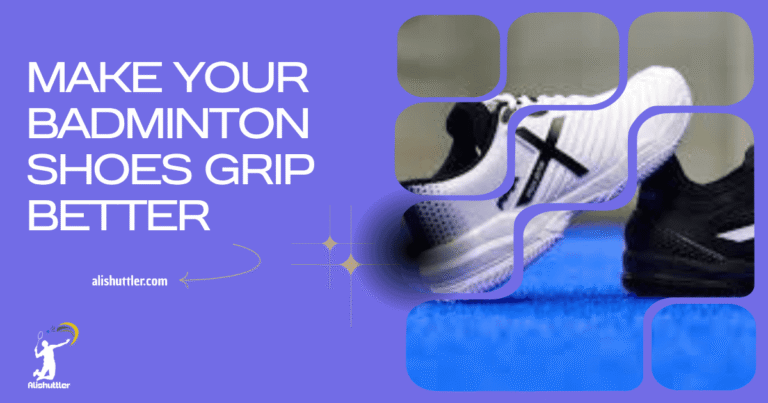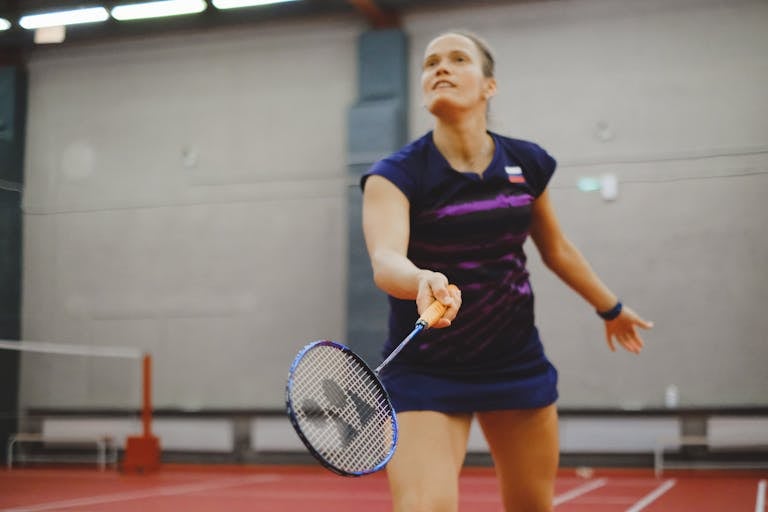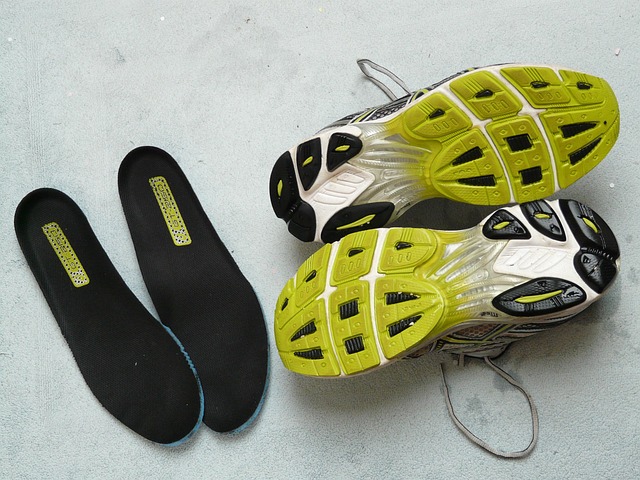The badminton serve rule dictates how players have to start each point in a match. A legal serve is hitting the shuttle below the server’s waist with both feet grounded.
The racket head must face downward and the shuttle shall go to the opposite service court. These regulations maintain fairness to both parties.
The following sections break down each rule and how to observe them in matches.
The Legal Serve
A legal serve in badminton serve rule requires the shuttlecock to fly up, over the net, and land in the correct service area of the opposite service court. Understanding basic badminton rules is essential for every player, as it ensures precise control of location, height, and impact, allowing beginners to dodge faults and keep the gameplay flowing smoothly.
- Shuttlecock to fly up and down in the opposite service court from the server
- Both players must be ready before the serve
- Server stands anywhere in their half, including tramlines
- Serve is cross-court and passes an opponent’s front service line.
- The serve is continuous with no pauses
- Whole shuttle struck below 1.15 meters at contact
- with both feet on the floor until the serve is struck.
- Server’s score decides service box: even score = right, odd = left
- Service judge can use a plastic height device to check legality.
- No formal time limit to serve, but slow play can be penalized.
1. Server Stance
Solid stance signifies feet shoulder width apart for footing. This makes it easier to react after the serve, and helps keep your center of gravity low. Knees remain bent for explosive push-off.
Body sideways to net for smoother follow-up. Racket grip must remain relaxed, not firm, for a supple swing and increased control. This position plays for all ability levels and simplifies adjusting your serve style, singles or doubles.
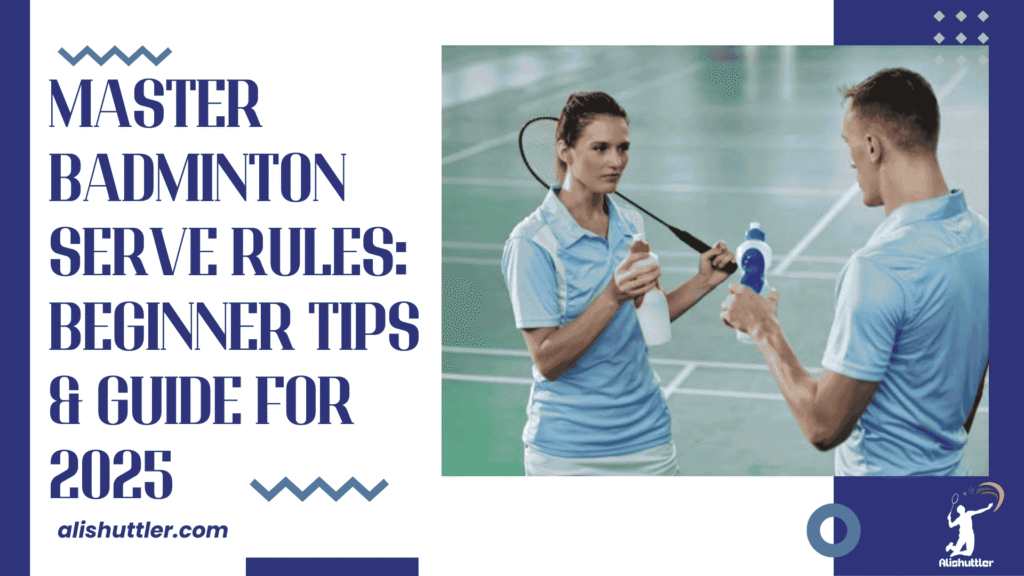
2. Racket Motion
Begin with a gliding backswing. The forward swing should remain deliberate, not hurried. This assists with both power and accuracy. Maintain the racket face to send the shuttle in its correct flight path.
Experiment with different swings in practice to discover which feels most natural. A forward, sweeping motion is essential no halts or spasmodic flails, or it’s considered a foul. An obvious, uncomplicated swing enables you to get to the shuttle below 1.15 meters as the rules stipulate.
3. Shuttlecock Height
At contact, the shuttle should be under 1.15 meters. This is verified by service judges with a plastic tool in elite matches. Players can employ a normal ruler at practice to develop muscle memory.
Adjust your toss or hand height accordingly to satisfy this rule, regardless of whether you utilize a forehand or backhand serve. See how the pros keep the shuttle low at contact for a legal serve. Routine checks in drills will train a rock solid serve, regardless of height or arm length.
4. Contact Point
Try to strike the shuttle at waist level, as this provides the optimal balance of accuracy and power. For a crisp shot, always hit the base of the shuttle, not the feathers. Experiment with smashing at different locations to alter the shuttle’s flight.
Keep your eye on the shuttle till you ‘strike’ for more accuracy. Never look away before contact.
5. Foot Placement
Have both feet on the ground until the serve is struck. Don’t step on or over the lines, or it’s a fault. Select a location that allows you to dart off after the serve.
Footwork drills can teach you optimal position and how to avoid faults. Solid footwork means fewer service errors.
Court Positions
Understanding court positioning and spacing is essential to observe serve regulations and play optimally. There is a net across the center of the court, dividing it into two halves, and service courts are marked on each side for singles and doubles play. Players may stand anywhere in their half, yes, even in the tramlines when serving or receiving.
Friend lines and service lines demarcate where the shuttle has to land and where you need to be for a valid serve. Tiny shifts of your standing, depending on rules and score, can impact immensely.
Singles Play
In singles, the gameplay utilizes a narrower badminton serve rule court than doubles, which means that movement and placement are more concentrated. The server stands in the right service court when the score is even and switches to the left when it is odd. For instance, at 4 points, you serve from the right, and at 5, you transition to the left, adhering to the basic badminton serve rules.
Never begin the game serving from the right hand side. Remain vigilant and prepared to spring into action post-serve. Stand a little behind the service line, with your feet both on the floor, so that you can get to returns on either side.
The serve has to be forward, and you’ve got to strike the shuttle in one continuous motion. Don’t hesitate or feint before hit. Try to land the shuttle just inside the opponents service box, particularly if you observe that they are sluggish in coverage of one side.
Developing a pre-service routine can enhance your performance. For example, tapping your racket twice or taking a deep breath before serving can foster consistency and reliability, ultimately reducing unforced errors during a badminton serve rule match.
Doubles Play
Doubles play alters the court layout, widening it but shortening it for serves. You and your partner must determine who serves initially. The first service is always from the right service court. At every point, the serving side changes service courts, and if you win a rally, you remain the server but must serve from the opposite side.
Collaborate with your partner to strategize serves. For example, if you have a good low serve, use it to make the opposition lift. Alternate your serves and shake up your targets so your opponents can’t guess what’s next.
Both players have to approach quickly after serve one forward to cover the net and the other retreating back court. Call out who’s taking shots near the middle so you don’t bump into each other. Rapid, crisp communication is key, particularly on rapid-fire rallies.
Even a brief word such as ‘mine’ or ‘yours’ will assist.
Importance of Positioning
How you stand can influence the quality with which you serve and return. Hang around the center of your service court. Don’t bunch up at the net or cling to the back line unless you have a strategy.
If you’re serving with an even score, then remember to go from the right. This rule remains in both singles and doubles. Switch up your position and distance as the play evolves.
If you’re down in points, a deeper serve could surely buy you time. If you’re ahead, a short serve is a good way to push it up a notch. Prepare before every serve. Hurrying results in sloppy errors and dropped points.
Serving Sequence
Serving is an organized affair in the badminton serve rule, adhering to the basic service rules that maintain the fairness and fluidity of the game. This sequence paces each rally, aids in scoring points, and keeps us all aligned with the badminton court rules.
- The game begins with a coin toss to determine who serves and from which side.
- The first server serves from the right court. If their score is even 0, 2, 4, they serve from the right. If the score is odd, they change to the left court.
- The service motion should be a continuous, forward. The shuttle has to be struck under 1.15 metre height.
- Both the badminton serve rule and the receiver have to be prepared, and there can be no lag time after both are ready.
- Except that players need not stand in their courts, they can be anywhere within their half, including the tramlines.
- No receiver can win two serves in a row in the same game, which keeps things fair, especially in doubles.
- In doubles, the server’s partner and the receiver’s partner may stand anywhere on their sides.
- Rotating the server in doubles is a requirement for sportsmanship and team tactics.
Starting The Game
Game begins with a toss of a coin. Whichever team wins the toss, they have the choice to serve or pick a side then the other team has the leftover option. The first serve is always from the right court.
This is where precision and cool heads count. A solid first serve establishes early dominance. That initial serve can determine the rhythm of the match, and players typically emphasize crisp, accurate positioning, aiming for open areas or the recipient’s weaker side.
A consistent beat and intensity prevent premature errors and sustain drive.
Doubles Rotation
Doubles matches bring yet more complexity. The server needs to always serve from the appropriate court right for even scores, left for odd. Partners have to say it straightforwardly so that no one serves out of turn.
For example, if the score is 4-3, the server commences from the left court. If they take the point, they shift to the right. The next server on the team moves in only after his/her side loses a point.
This rotation keeps both teams engaged and clears up ambiguity. Moving people around on the court depending on the score increases coverage and allows teams to predict returns. No receiver can take two serves in a row, so it’s fair and it flows.
Tracking The Sequence
Keeping track of the badminton serve rule order is key. Even pros can falter, particularly during extended exchanges. Score sheets or digital scoreboards assist, but the majority of players depend on memory and solid team talk.
Just one skip-rotation results in dropped points and disorientation.
Avoiding Errors
Be attentive and be sure to check your position before every badminton serve rule! This simple habit reduces errors.
Speak to your partner prior to every serve. It just aids concentration and avoids confusion.
If in doubt, ask the ump or score. It’s safer than risking a foul.
Serving sequence errors can lose points. Play by the rules to maintain the integrity of the game.
Common Faults
Knowing standard badminton serve rule faults is essential for any player who wishes to advance their game and prevent gifting easy points. Serving faults are the bane of match flow; they lead to penalties and are frequently the result of basic errors in technique or awareness.
Some common serving faults include:
- Foot fault stepping on or over the service line during a serve.
- Hitting the shuttle above the allowed height
- Using excessive or improper racket movements
- Delaying the serve beyond a reasonable time
- Moving before the opponent serves
- Double-hitting the shuttlecock
- Interfering with the shuttle over the net
- Standing in the wrong position on the court
- Hitting the shuttle out of bounds or into the net
- Failing to make a clear, precise serve
Service rules stick, less penalties, smoother match. By studying your serve, you can identify common errors and correct them. Frequent practice helps reduce errors and hones your style.
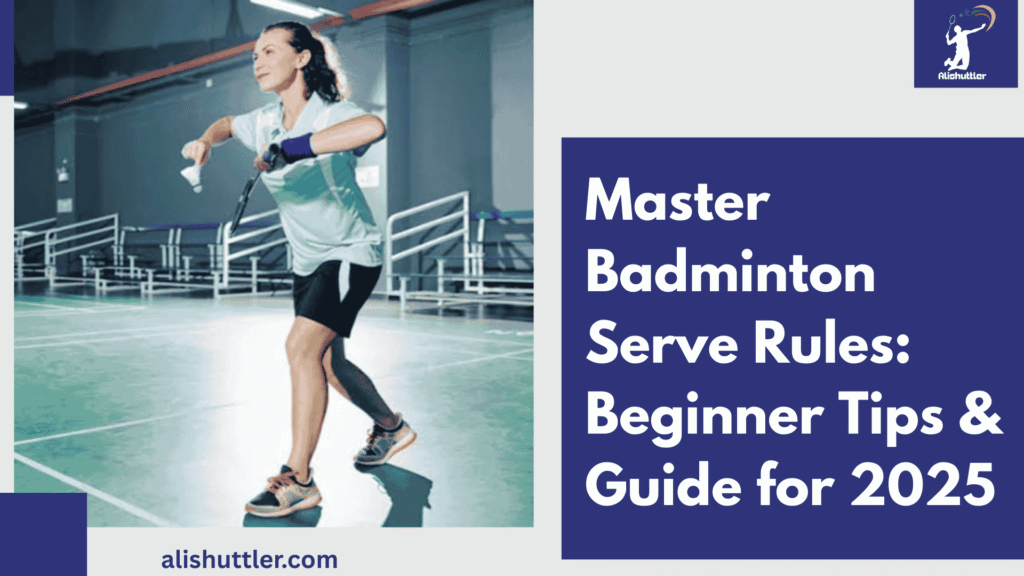
Foot Faults
One of the most common errors is stepping on or over the service line while serving. Even a little toe over the line can net you a fault and end the rally or gift the point. Players must keep their feet behind the line until they complete their service motion.
Footwork is imperative. Keep both feet down always until you begin the serve. Shifting or lifting feet early violates the rules and is readily detectable by referees. Monitoring your footwork in practice will prevent you from developing bad habits, particularly as you acclimate to the intensity of a real match.
Knowing the badminton serve rule, both feet on the ground, behind the line, until the shuttle is hit, means you keep your serves legal and your play fair.
Height Violations
A legal serve in badminton serve rule requires striking the shuttlecock below waist height, which is considered the lowest part of the ribcage. Striking over this line results in immediate fouls. This rule guarantees all players get a fair shake.
Even just doing practice swings to hit at the right height can instill good muscle memory. Some players place tape or a marker on their shirt during drills to assist in judging this. Learning the height rule is easy, but recalling it in the heat of a game can be tricky.
Monitoring your serving form and consulting with your eyes can help you remain consistent, preventing needless calls against you.
Motion Errors
A sleek, gliding stroke is the aim of each serve. Too many wrist flicks, double swings, or catching yourself mid-swing can all be faults. The rules demand a single unhesitating breathless stride forward, halting or feigning throwing off the opposition and fracturing the code.
Reviewing your serve on video or through coach commentary is a great way to detect if you’re suffering from these mistakes. Drilling various serve types, such as low, flick, or drive serves, with an emphasis on smooth motion can keep you flexible while ensuring each serve remains legal.
Delay Tactics
Hindering your serve or taking too long after both players are set can result in warnings and faults. These rules keep the game flowing and prevent you from driving your opponent nuts.
Forming a quick, pre-serve habit helps maintain the rhythm. Remaining mentally primed and centered can help minimize the desire to idle. Skipping the lag means less punishment and a better game for all.
Strategic Serves
A strategically served shuttlecock in the badminton serve rule not only initiates the rally, it also defines the match, establishes momentum, and provides players with a tactical advantage. Mastering badminton rules and serve options enables you to gain space, control pace, and keep your opponent on their toes. Various serve types, each with their style and purpose, allow players to construct a serve strategy that complements their strengths and attacks the other side’s vulnerabilities in a badminton match.
The Low Serve
A low serve glances a few inches over the net, challenging opponents to drive it on the rise. It works best for singles and doubles, particularly to restrict the receiver from being able to push or drive the shuttle back hard.
Precision and location is what counts with a low serve. Attack at the front service line and drive the shuttle low, making your opponent lift it. Repetition of this serve gets you the muscle memory and confidence that you can trust it when needed under pressure.
The low serve can surprise a receiver as well, especially if they anticipate a high or flick serve. Great footwork and a cool hand will help you sidestep faults and keep the shuttle flying.
The High Serve
High serve shoots the shuttle high and deep, back courting the opponent. This is standard in singles and can extend the opponent’s court coverage.
| Technique | Effectiveness | Best Use Case |
|---|---|---|
| Standard High Serve | Forces deep return, limits attack | Singles baseline defense |
| Long Forehand Serve | Stretches play, tests backhand | Opponent weak at baseline |
| Left-Handed Serve | Changes angle, alters response | Right-handed receivers |
The best high serves drop so steeply, almost vertically, at the service line, that it makes it hard for the opponent to attack. Experimenting with server variations and logging what works will shape your strategy.
Use a continuous, forward, churning stroke; anything that slows you down or causes you to hesitate might leak your next shot.
The Flick Serve
The flick serve employs a quick wrist snap to send the shuttle fast and high, surprising a receiver anticipating a low serve. It’s extra helpful in doubles, where they crouch for a quick volley.
Trickery is the name of the game here. Minor grip or wrist movement adjustments can alter the pace, making the shot more difficult for the receiver to predict. The flick serve is most effective when unexpected, so consistent practice is required to gain control and disguise your intent.
The Drive Serve
Drive serves are flat, fast and direct. It skims the net, sneaking into seams or crushing the receiver into uncomfortable stances.
It works best as a surprise move. Serve into your opponent’s body or wide to the sidelines for maximum rattle. Drive serves are great for increasing speed and accuracy, allowing you to disrupt your opponent’s rhythm or induce a soft reply.
Unless your service was out or into the net or didn’t follow the switching rule, then it counts. Serving in one second and in one fluid motion makes your play honest and spontaneous.
Rule Evolution
Badminton serve rule service rules have evolved considerably since the game began, particularly in ensuring fairness in gameplay. Understanding these badminton court rules allows players, especially beginners, to appreciate the quality of matches and the strategies that lead to success in tournaments.
Historical Changes
Badminton serve rule’s original rules, influenced by British players in India, are from 1873. The service rules were rigid and primordial, emphasizing keeping rallies equitable. Players were required to serve underhand, and the shuttlecock could not be higher than the waist.
A lot evolved over the years. For instance, the 15 × 3 scoring system, that is a game had three sets of fifteen points, hung around for a while. This system originated with the 1873 Muree-Similar Rules. Later, they dabbled with a 5 × 7 system, attempting to make matches shorter, but ditched it by 2009.

Players’ reactions have always helped craft the rules. When matches stalled too long, organizers sought out ways to bring things to quicker conclusions. The migration from the 15 × 3 to newer systems wasn’t always seamless. In 2002, a novel approach was trialed but didn’t take hold.
All of these changes made players’ serve and return strategies reconsider. The manner in which players served was unlike today. The ancient guidelines compelled lofty, looping serves, but over time, as rules evolved, low, rapid serves reigned.
| Year | Scoring System | Notes |
|---|---|---|
| 1873 | 15 × 3 | Muree-Simla Rules, first formal rules |
| 2002 | New system tested | Did not gain traction |
| 2009 | 5 × 7 last used | Experiment discontinued |
| Present | Rally point system* | Potential for new system in 2026 |
Modern Impact
New service rules are about fairness and velocity. Today, the server is required to strike the shuttle beneath a certain height and both feet must remain on the floor. Technology helps enforce these rules. Tools such as instant replay and height sensors ensure that no one receives an unfair advantage.
This transformed coaching players now practice strokes that suited these very rules. Training is different as well. Players analyze tips, such as hand grip and foot position, to steer clear of fouls.
With the advent of worldwide competitions, we all have to abide by the same rules. This is to say that a player from any nation will now experience consistent rules across all tournaments. A few organizations are discussing more modifications down the road for the badminton serve rule.
The BWF remains receptive to input. Perhaps a new scoring proposal at the AGM in 2026. Keeping current is essential for anyone who wants to perform at the highest level.
Final Thoughts
The legal badminton serve rule keeps play fair and fast. Minute adjustments of grip or foot stance can turn the entire round. Courts employ predetermined spots and order to maintain clarity. Missed serves, or faults, are point losers, so clever players mind their footing and racquet stroke. New rule tweaks attempt to keep up with the way people play today. These rules, when known, help new and old players alike stay sharp and have fun. To play your best, monitor your serve, watch your form, and stay current on the latest changes. If you want to grow your game, review match video or consult with a coach to get tips on your serve.
Frequently Asked Questions
What is a legal badminton serve?
To adhere to badminton rules, a legal serve requires the shuttlecock to be struck below the server’s waist and land in the correct service area, crossing diagonally over the net.
Where should players stand during a serve?
Inside their service courts, without touching the court boundaries, the server and receiver must stand opposite each other in a diagonal line across the badminton court.
How is the serving sequence decided?
In a badminton match, the server alternates according to the score, with singles serving from the right service court on an even score and the left service court when odd, showcasing basic service rules.
What are common serving faults in badminton?
Typical faults in a badminton match include serving overhead, foot faults, or missing the shuttlecock, which can result in losing the serve or giving a point to your opponent.
Can you use different types of serves in badminton?
While yes, badminton players employ low serve, high serve, flick serve, and drive serve, each providing unique tactical benefits in specific badminton match scenarios.
How have badminton serve rules changed over time?
Serve rules have changed for the better in badminton. Updates regarding waist height definitions, racket position, and service court rules enhance gameplay, ensuring fairness in every badminton match.
Why is understanding serving rules important in badminton?
Understanding the badminton rules surrounding the serve aids in evading faults and penalties. It offers players a tactical edge, resulting in a slicker, more exhilarating badminton match for all involved.

